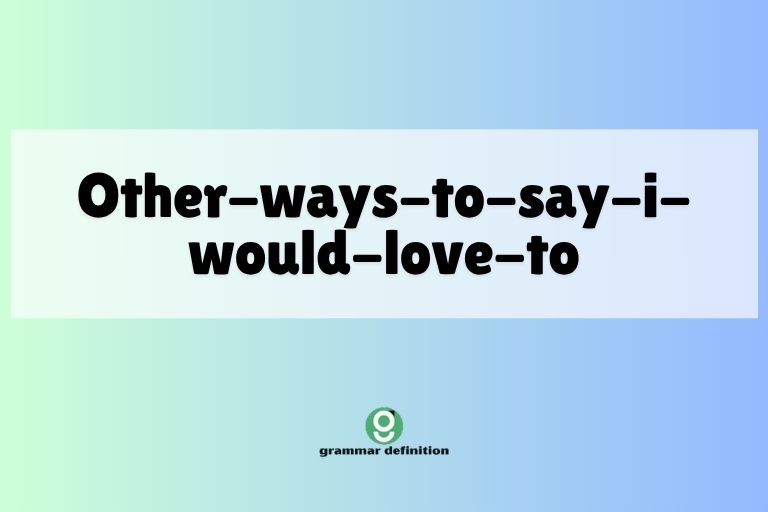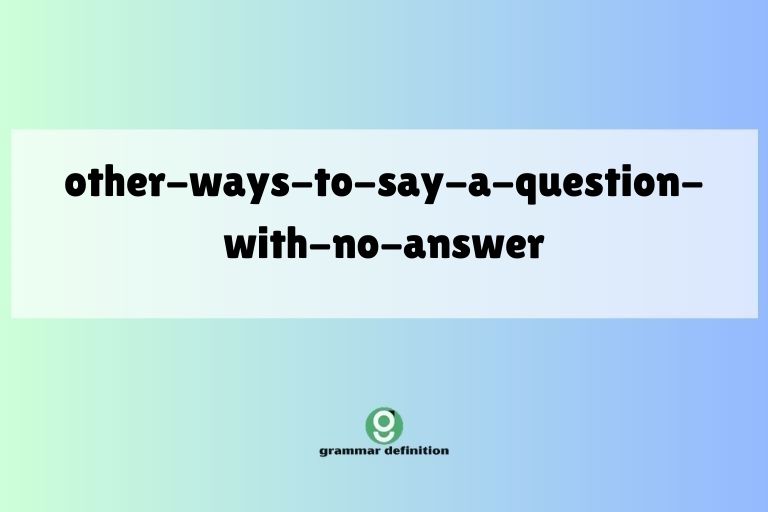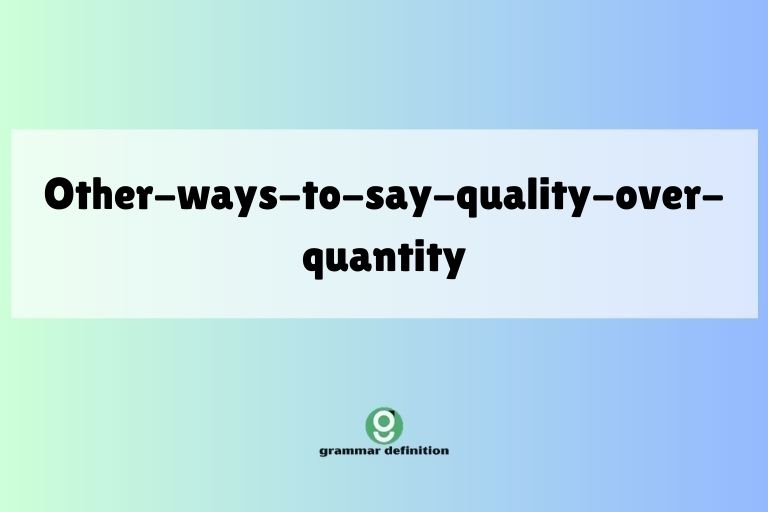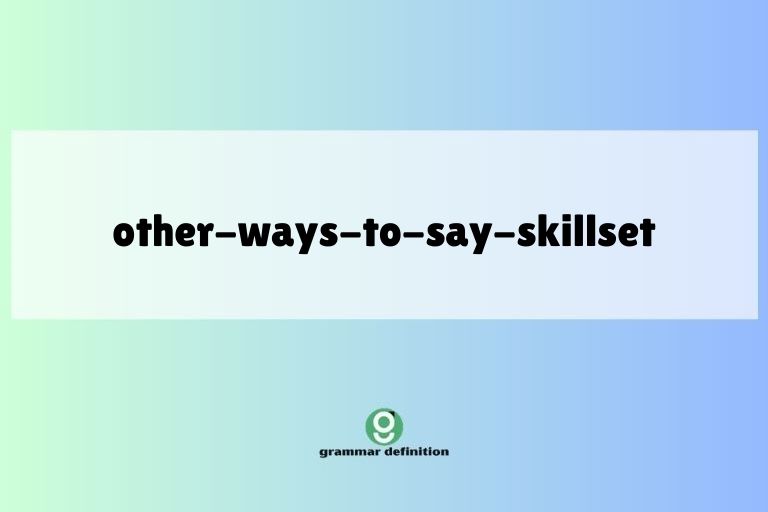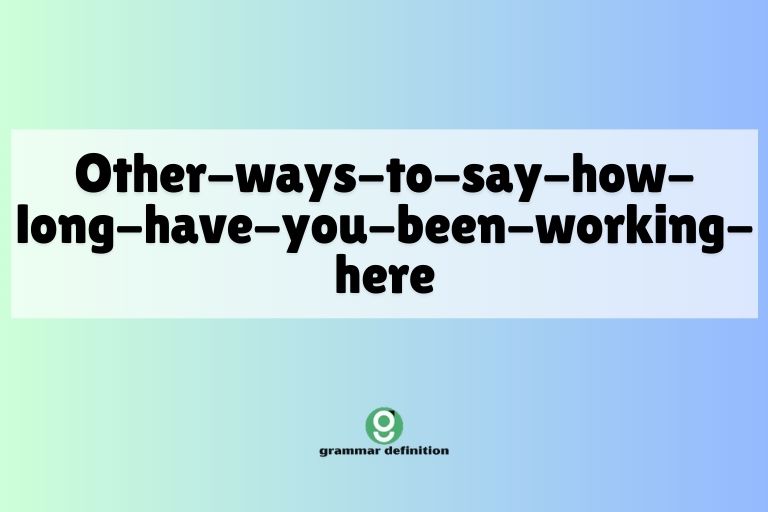Other Ways to Say “Drive Safe”: A Comprehensive Guide
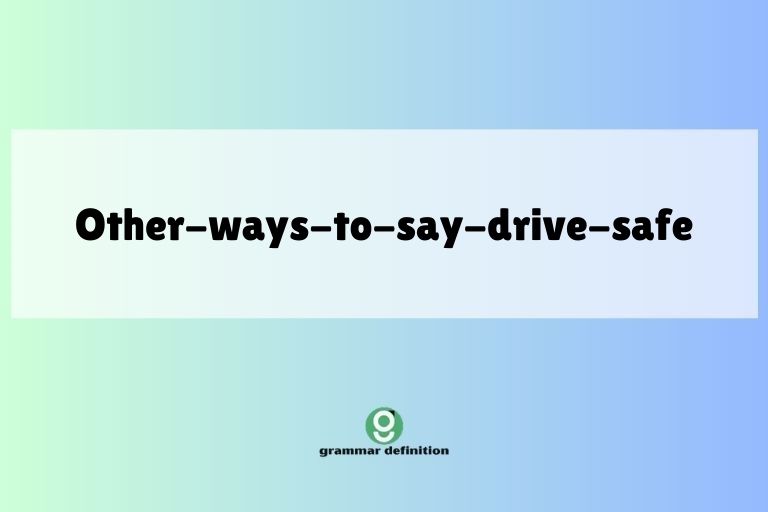
Ensuring the safety of ourselves and others on the road is paramount. While “Drive safe” is a common and well-understood phrase, exploring alternative expressions can add variety to your language and allow you to convey nuances of concern, encouragement, or urgency.
This article provides a comprehensive guide to various ways to say “drive safe,” covering their meanings, contexts, and proper usage. Whether you’re a native English speaker looking to expand your vocabulary or an English language learner aiming for fluency, this guide will equip you with the knowledge and tools to communicate your well wishes effectively.
Understanding these alternative phrases not only enhances your communication skills but also provides insight into the subtle differences in meaning and tone that different expressions can convey. Mastering these phrases will benefit anyone who communicates regularly with drivers, from family members and friends to colleagues and business associates.
Table of Contents
- Introduction
- Definition: What Does “Drive Safe” Really Mean?
- Structural Breakdown: Analyzing the Phrase “Drive Safe”
- Types and Categories of Alternative Phrases
- Examples: Alternative Phrases in Action
- Usage Rules: Ensuring Correct Application
- Common Mistakes: Avoiding Pitfalls
- Practice Exercises: Test Your Knowledge
- Advanced Topics: Nuances and Subtleties
- FAQ: Frequently Asked Questions
- Conclusion
Definition: What Does “Drive Safe” Really Mean?
“Drive safe” is a concise and direct imperative phrase used to wish someone a safe journey when they are about to drive a vehicle. It essentially means “take precautions while driving to avoid accidents or harm.” The phrase encapsulates a broader sentiment of care and concern for the driver’s well-being, urging them to prioritize safety and exercise caution on the road.
It’s a common expression used in various contexts, from casual goodbyes to more formal farewells.
The underlying message is one of responsibility and awareness, prompting the driver to adhere to traffic laws, remain vigilant, and avoid distractions. By saying “drive safe,” we’re not only wishing the person well but also reminding them of the potential risks associated with driving and the importance of making safe choices.
Structural Breakdown: Analyzing the Phrase “Drive Safe”
The phrase “drive safe” is grammatically simple but effective. It comprises two key components:
- Verb: “Drive” – This is the imperative form of the verb, instructing the person to perform the action of driving.
- Adjective: “Safe” – This adjective modifies the verb “drive,” indicating the manner in which the action should be performed. It emphasizes the importance of driving in a safe and cautious manner.
The imperative mood is used to give a command or make a request. In this case, it’s a friendly command, urging the driver to prioritize safety.
The adjective “safe” clarifies the intention of the command, ensuring that the driver understands the desired outcome: a journey free from accidents or harm. The brevity of the phrase contributes to its widespread use and easy recall.
Types and Categories of Alternative Phrases
There are numerous ways to convey the sentiment of “drive safe,” each with its own nuances and level of formality. These phrases can be categorized based on their intent and grammatical structure.
Here are some of the main categories:
Imperative Suggestions
These phrases directly instruct the driver to take specific actions to ensure their safety. They often include verbs like “be,” “stay,” or “keep,” followed by adjectives or adverbs related to safety and caution.
Expressions of Hope and Wishes
These phrases express a desire for the driver to have a safe journey. They often include words like “hope,” “wish,” or “have,” conveying a sense of optimism and good will.
Cautionary Advice
These phrases emphasize the potential dangers of driving and remind the driver to be careful and attentive. They often include verbs like “watch,” “be careful,” or “pay attention,” followed by phrases that highlight specific risks.
Encouraging Phrases
These phrases offer encouragement and reassurance to the driver, boosting their confidence and reminding them of their ability to drive safely. They often include words like “carefully,” “well,” or “responsibly.”
Informal Greetings and Farewells
These phrases are used in casual settings and often combine a greeting or farewell with a wish for a safe journey. They tend to be more relaxed and conversational in tone.
Examples: Alternative Phrases in Action
Here are some examples of alternative phrases for “drive safe,” categorized by their type. Each category includes a table with numerous examples to illustrate the range of options available:
Table 1: Imperative Suggestions
This table lists various imperative suggestions that directly instruct the driver to take actions to ensure their safety. These phrases use verbs like “be,” “stay,” and “keep” to emphasize the importance of caution and vigilance.
| Phrase | Context |
|---|---|
| Be careful on the road. | General advice, suitable for any driving situation. |
| Stay safe out there. | Informal, friendly farewell. |
| Keep a sharp lookout. | Advising vigilance, especially in challenging conditions. |
| Be attentive to your surroundings. | Emphasizing awareness of the environment while driving. |
| Stay focused on the road. | Reminding the driver to avoid distractions. |
| Keep your eyes on the road. | A direct reminder to maintain visual attention. |
| Be mindful of other drivers. | Encouraging consideration for other road users. |
| Stay within the speed limit. | Specific advice regarding speed. |
| Keep a safe distance. | Advising to maintain adequate following distance. |
| Be sure to buckle up. | Emphasizing the importance of wearing a seatbelt. |
| Stay alert. | A concise reminder to remain vigilant. |
| Keep your headlights on. | Specific advice for driving in low-light conditions. |
| Be patient with traffic. | Encouraging composure in congested areas. |
| Stay calm and drive carefully. | Combining calmness with careful driving. |
| Keep both hands on the wheel. | A reminder to maintain control of the vehicle. |
| Be extra cautious. | Emphasizing heightened awareness. |
| Stay aware of your blind spots. | Advising to check blind spots regularly. |
| Keep hydrated during your trip. | Suggesting to drink enough water especially on long trips. |
| Be prepared for unexpected stops. | Advising readiness for sudden changes in traffic. |
| Stay rested before driving. | Emphasizing the importance of being well rested. |
| Be careful and take your time. | Advising caution and avoiding rushing. |
| Stay off your phone while driving. | A strong reminder against distracted driving. |
| Keep checking your mirrors. | Advising regular mirror checks for awareness. |
| Be responsible behind the wheel. | Emphasizing the importance of responsible driving. |
| Stay safe and have a good trip. | Combining safety wishes with a positive sentiment. |
Table 2: Expressions of Hope and Wishes
This table presents phrases that express a desire for the driver to have a safe journey. These expressions use words like “hope,” “wish,” and “have” to convey optimism and good will.
| Phrase | Context |
|---|---|
| I hope you have a safe drive. | Common, polite expression of concern. |
| Wish you a safe journey. | Formal and heartfelt wish. |
| Have a safe trip. | Simple and widely used expression. |
| May your journey be safe. | A more poetic and formal expression. |
| Hope you arrive safely. | Expressing concern for the driver’s destination. |
| Wishing you a safe arrival. | Formal and sincere wish for a safe arrival. |
| I hope you get there safe. | Informal expression of concern. |
| Have a safe drive home. | Specific to the driver’s return journey. |
| Wish you safe travels. | General wish for safe travels, suitable for any journey. |
| Hope you make it there and back safely. | Expressing concern for both legs of the journey. |
| May you be protected on your journey. | A wish for divine protection. |
| Hope the roads are clear for you. | Expressing a wish for easy driving conditions. |
| Wishing you calm and safe travels. | Combining calmness with safety wishes. |
| Have a peaceful and safe journey. | Wishing for a tranquil and secure trip. |
| Hope you encounter no troubles on the road. | Expressing a wish for a smooth journey. |
| May your trip be uneventful and safe. | Wishing for a routine and secure trip. |
| Have a safe and enjoyable drive. | Combining safety wishes with enjoyment. |
| Hope you have a smooth and safe journey. | Wishing for a seamless and secure trip. |
| Wishing you a safe and swift journey. | Combining safety wishes with speed. |
| Have a safe and comfortable ride. | Wishing for a secure and pleasant trip. |
| Hope you reach your destination safe and sound. | Expressing a wish for a secure and unharmed arrival. |
| Wishing you a safe and successful journey. | Combining safety wishes with success. |
| Have a safe trip and enjoy yourself. | Combining safety wishes with enjoyment. |
| Hope your journey is filled with safety and joy. | Expressing a wish for a secure and happy trip. |
| Wishing you safe travels and good company. | Combining safety wishes with companionship. |
Table 3: Cautionary Advice
This table provides phrases that emphasize the potential dangers of driving and remind the driver to be careful and attentive. These phrases use verbs like “watch,” “be careful,” and “pay attention” to highlight specific risks.
| Phrase | Context |
|---|---|
| Watch out for other drivers. | Reminding the driver to be aware of others on the road. |
| Be careful of the weather. | Advising caution in adverse weather conditions. |
| Pay attention to the road. | Emphasizing the importance of focus. |
| Be mindful of pedestrians. | Reminding the driver to watch out for people walking. |
| Watch out for black ice. | Specific warning about a hazardous road condition. |
| Be careful on those winding roads. | Advising caution on roads with many turns. |
| Pay extra attention in construction zones. | Emphasizing heightened awareness in work areas. |
| Be mindful of cyclists. | Reminding the driver to watch out for bicyclists. |
| Watch out for deer crossing. | Specific warning about wildlife crossing the road. |
| Be careful driving at night. | Advising caution when visibility is reduced. |
| Pay attention to traffic signals. | Emphasizing the importance of obeying traffic laws. |
| Be mindful of changing lanes. | Reminding the driver to be careful when switching lanes. |
| Watch out for potholes. | Specific warning about road damage. |
| Be careful when it’s raining. | Advising caution in wet conditions. |
| Pay attention to your speed. | Emphasizing the importance of speed control. |
| Be mindful of large trucks. | Reminding the driver to be aware of large vehicles. |
| Watch out for merging traffic. | Specific warning about vehicles entering the roadway. |
| Be careful of slippery roads. | Advising caution on roads with reduced traction. |
| Pay attention to road signs. | Emphasizing the importance of following traffic instructions. |
| Be mindful of school zones. | Reminding the driver to be extra cautious near schools. |
| Watch out for sudden stops. | Advising readiness for unexpected braking. |
| Be careful during rush hour. | Advising caution in congested traffic times. |
| Pay attention to your vehicle’s condition. | Emphasizing the importance of vehicle maintenance. |
| Be mindful of fatigue while driving. | Reminding the driver to avoid driving when tired. |
| Watch out for distractions in the car. | Advising against anything that takes focus from driving. |
Table 4: Encouraging Phrases
This table presents phrases that offer encouragement and reassurance to the driver, boosting their confidence and reminding them of their ability to drive safely. These phrases often include words like “carefully,” “well,” and “responsibly.”
| Phrase | Context |
|---|---|
| Drive carefully. | General encouragement for safe driving. |
| Drive well. | Expressing confidence in the driver’s skills. |
| Drive responsibly. | Emphasizing the importance of responsible behavior. |
| Take care driving. | Combining encouragement with a reminder to be careful. |
| Be safe driving. | A concise and direct encouragement. |
| Handle the road with care. | A more poetic encouragement. |
| Navigate safely. | Encouraging safe navigation. |
| Keep your wits about you on the road. | Encouraging alertness and quick thinking. |
| Stay in control behind the wheel. | Emphasizing the importance of maintaining control. |
| Drive with confidence and caution. | Combining confidence with carefulness. |
| Remember all your training and drive safely. | Reminding the driver of their skills. |
| Keep a steady hand on the wheel. | Encouraging smooth and controlled driving. |
| Trust your instincts and drive safely. | Encouraging the driver to rely on their judgment. |
| Stay focused and drive well. | Combining focus with skillful driving. |
| Be aware and drive safely. | Combining awareness with safety. |
| Keep calm and drive carefully. | Encouraging composure and carefulness. |
| Stay alert and drive responsibly. | Combining alertness with responsible behavior. |
| Be prepared and drive safely. | Combining preparedness with safety. |
| Keep your distance and drive carefully. | Encouraging safe following distance and carefulness. |
| Stay patient and drive well. | Combining patience with skillful driving. |
| Remember to prioritize safety. | A direct reminder to focus on safety. |
| Keep the safety of others in mind. | Emphasizing consideration for other road users. |
| Stay positive and drive safely. | Combining positivity with safety. |
| Be vigilant and drive responsibly. | Combining vigilance with responsible behavior. |
| Keep your focus sharp and drive well. | Encouraging focused and skillful driving. |
Table 5: Informal Greetings and Farewells
This table presents phrases used in casual settings that combine a greeting or farewell with a wish for a safe journey. They tend to be more relaxed and conversational in tone.
| Phrase | Context |
|---|---|
| See you later, drive safe! | Common, informal farewell. |
| Take care, drive safe. | Friendly and casual goodbye. |
| Bye, drive safe! | Simple and quick farewell. |
| Have a good one, drive safe. | Informal farewell with a wish for a good day. |
| Later, drive safe! | Very informal goodbye. |
| All the best, drive safe. | Wishing someone well with a safety reminder. |
| So long, drive safe! | A slightly old-fashioned farewell. |
| Catch you later, drive safe. | Casual and friendly goodbye. |
| Take it easy, drive safe! | Encouraging relaxation with a safety reminder. |
| Until next time, drive safe. | Farewell with an expectation of seeing them again. |
| Safe travels! | A shortened, more casual way to say “Have safe travels”. |
| Be good, drive safe! | A playful farewell. |
| Alright, drive safe! | A casual acknowledgement and farewell. |
| Have fun, but drive safe! | Combining a wish for enjoyment with safety. |
| See ya, drive safe! | A very informal and shortened farewell. |
| Peace out, drive safe! | Slang farewell with a safety reminder. |
| Good luck, drive safe! | Wishing someone well with a safety reminder. |
| Stay cool, drive safe! | Encouraging composure with a safety reminder. |
| Keep in touch, drive safe! | Farewell with a desire to stay connected. |
| Be careful out there! | A general expression of concern for the driver’s safety. |
| Have a great day, and drive safe! | Combining a wish for a good day with safety. |
| Safe driving! | A shortened, more casual way to say “Drive safe”. |
| Take care on the roads! | A general expression of concern for safety on the road. |
| See you soon, drive safe! | Farewell with an expectation of seeing them soon. |
| Have a wonderful trip, drive safe! | Combining a wish for a good trip with safety. |
Usage Rules: Ensuring Correct Application
While many of the phrases listed above are interchangeable, some have specific contexts in which they are more appropriate. Here are some general usage rules to keep in mind:
- Formality: Choose phrases that match the level of formality of the situation. “I wish you a safe journey” is more formal than “Drive safe!”
- Relationship: Consider your relationship with the driver. Informal phrases are suitable for friends and family, while more formal phrases may be appropriate for colleagues or acquaintances.
- Context: Tailor your phrase to the specific driving conditions. For example, if the weather is bad, you might say, “Be careful of the weather.”
- Specificity: If you have specific concerns, address them directly. For instance, “Watch out for deer crossing” is more helpful than a general “Drive safe.”
- Tone: Ensure your tone matches the message. A sincere and caring tone is always appropriate when wishing someone a safe journey.
It’s also important to avoid using phrases that could be interpreted as condescending or patronizing. The goal is to express genuine concern, not to imply that the driver is incapable of driving safely.
Common Mistakes: Avoiding Pitfalls
Even with simple phrases, it’s easy to make mistakes. Here are some common errors to avoid:
| Incorrect | Correct | Explanation |
|---|---|---|
| Drive safety. | Drive safe. | “Safe” is an adjective modifying the verb “drive,” not an adverb. |
| Hope you will drive safely. | I hope you have a safe drive. | The first sentence is grammatically correct but less common and sounds slightly awkward. The second option is more natural. |
| Have a safely trip. | Have a safe trip. | “Safe” is the correct adjective to describe the trip. |
| Be careful on driving. | Be careful driving. | “Driving” is used as a gerund (noun) in this context, so the preposition “on” is unnecessary. |
| Watch out from other drivers. | Watch out for other drivers. | The correct preposition to use with “watch out” in this context is “for.” |
Another common mistake is overusing the same phrase repeatedly. Varying your language can make your communication more engaging and expressive.
Practice Exercises: Test Your Knowledge
Test your understanding of alternative phrases for “drive safe” with these exercises:
Exercise 1: Fill in the Blanks
Complete the following sentences with an appropriate phrase from the list below.
Phrases: Have a safe trip, Be careful on the road, Watch out for other drivers, I hope you arrive safely, Drive responsibly
| Question | Answer |
|---|---|
| 1. ________, especially during rush hour. | Be careful on the road |
| 2. ________, and remember to buckle up. | Drive responsibly |
| 3. ________, there are a lot of distracted people out there. | Watch out for other drivers |
| 4. ________, I’ll be waiting for your call when you get there. | I hope you arrive safely |
| 5. ________, and call me when you get to your destination. | Have a safe trip |
| 6. ________, the weather is terrible. | Be careful on the road |
| 7. ________, and take breaks if you need them. | Drive responsibly |
| 8. ________, especially after dark. | Watch out for other drivers |
| 9. ________, looking forward to seeing you. | I hope you arrive safely |
| 10. ________, and don’t forget your map. | Have a safe trip |
Exercise 2: Multiple Choice
Choose the best alternative phrase for “drive safe” in each scenario.
| Question | Options | Answer |
|---|---|---|
| 1. You’re saying goodbye to a friend who is driving home late at night. | a) Have a nice day. b) Be careful driving at night. c) See you tomorrow. | b) Be careful driving at night. |
| 2. You’re sending a colleague off on a long business trip. | a) Good luck. b) Drive fast. c) I wish you a safe journey. | c) I wish you a safe journey. |
| 3. You’re saying goodbye to your teenage son who just got his license. | a) Have fun. b) Drive responsibly. c) Go crazy. | b) Drive responsibly. |
| 4. You’re talking to a taxi driver at the end of your ride. | a) Thanks. b) Drive safe! c) Goodbye. | b) Drive safe! |
| 5. You see a friend leaving during a snowstorm. | a) Have a good time! b) Be careful of the weather! c) See you later! | b) Be careful of the weather! |
| 6. You’re saying goodbye to a family member heading out on a cross-country road trip. | a) Have fun. b) May your journey be safe. c) See you soon. | b) May your journey be safe. |
| 7. You’re saying goodbye to someone who’s known for taking risks while driving. | a) Have a great time. b) Drive carefully. c) See you later. | b) Drive carefully. |
| 8. You’re saying goodbye to someone heading out on a road trip with friends. | a) Enjoy the music. b) Stay focused on the road. c) Have a great time. | b) Stay focused on the road. |
| 9. You’re saying goodbye to a delivery driver heading out for the day. | a) See you later. b) Safe travels! c) Have a wonderful time. | b) Safe travels! |
| 10. You’re saying goodbye to someone heading out for their first driving lesson. | a) Have fun. b) Keep calm and drive carefully. c) See you soon. | b) Keep calm and drive carefully. |
Advanced Topics: Nuances and Subtleties
Beyond the basic phrases, there are more nuanced ways to express concern for a driver’s safety. These involve understanding the psychological impact of your words and tailoring your message to the individual.
- Positive Reinforcement: Instead of focusing on potential dangers, highlight the driver’s skills and experience. For example, “I know you’re a skilled driver, just stay focused.”
- Empathetic Language: Acknowledge the challenges of driving, such as traffic or bad weather. This shows that you understand their situation and are not simply lecturing them. For example, “I know the traffic is bad, so take your time and be patient.”
- Personalized Messages: Tailor your message to the individual’s personality and driving habits. If they tend to speed, gently remind them to stay within the limit. If they are easily distracted, encourage them to put their phone away.
- Non-Verbal Communication: Your tone of voice and body language can also convey concern. Speak calmly and sincerely, and avoid appearing anxious or judgmental.
Mastering these subtleties can make your message more effective and build trust with the driver.
FAQ: Frequently Asked Questions
Here are some frequently asked questions about alternative phrases for “drive safe”:
- Is “drive safely” grammatically correct?
While understandable, “drive safely” is less common and less idiomatic than “drive safe.” “Safe” functions as an adjective describing the manner of driving, making “drive safe” the preferred choice.
- What’s the difference between “Have a safe trip” and “Have a safe journey”?
The terms are largely interchangeable. “Trip” is generally used for shorter distances, while “journey” can imply a longer, more significant travel. However, in most contexts, either phrase is appropriate.
- When should I use a formal phrase like “I wish you a safe journey”?
Use formal phrases when addressing someone you don’t know well, a superior at work, or in a situation that calls for politeness and respect. It’s also suitable for written communication, such as emails or letters.
- Are there any phrases I should avoid?
Avoid phrases that could be interpreted as sarcastic or condescending. Also, be mindful of cultural differences. Some phrases might be considered offensive in certain cultures.
- How can I make my message more personal?
Add a personal touch by referencing something specific about the driver or their trip. For example, “I know you’re excited to see your family, so drive safe and enjoy the visit.”
- Is it okay to use slang when saying “Drive safe”?
Slang can be okay depending on your relationship with the person. For example, saying “Peace out, drive safe!” to a close friend is fine, but it would be inappropriate in a formal or professional setting.
- What if I know the person is a bad driver?
It’s best to tread carefully. Instead of directly criticizing their driving, focus on general safety advice. For example, “Remember to stay focused and avoid distractions.”
- Can I use these phrases in written communication?
Yes, most of these phrases are suitable for written communication, such as text messages, emails, or social media posts. Choose the phrase that best matches the tone and context of your message.
Conclusion
Mastering alternative ways to say “drive safe” enhances your communication skills and allows you to express your concern for others in a more nuanced and engaging way. By understanding the different types of phrases, their proper usage, and common mistakes to avoid, you can ensure that your message is both effective and well-received.
Remember to consider the context, your relationship with the driver, and the specific driving conditions when choosing your words.
Ultimately, the most important thing is to convey your genuine care and concern for the driver’s well-being. Whether you choose a simple “Drive safe!” or a more elaborate “I wish you a safe journey,” your message will be appreciated as a sign of your thoughtfulness and consideration.
Keep practicing these phrases in your daily conversations, and you’ll soon find them becoming a natural part of your vocabulary.

